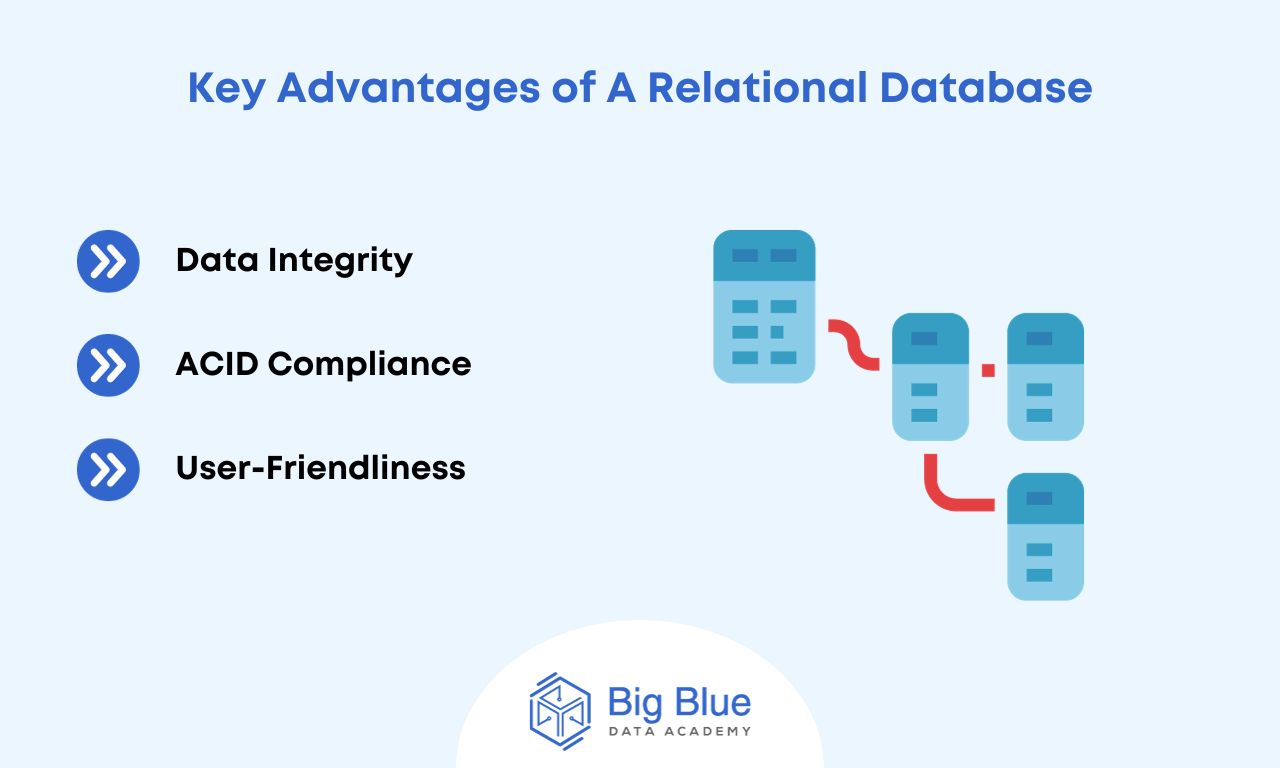Relational Databases: Definition, Types, and Advantages
Often, many people wonder how modern businesses and various organizations effectively store and manage their data, which is often complex and voluminous.
Databases have been the key to immediate and efficient service, and the overall smooth and seamless operation of a business in terms of managing the data they have.
There are various types of databases, but in today's article, we will focus on relational databases.
More specifically, in today's article, we will look at:
- What relational databases are
- What advantages they offer
- What types exist
- How a relational database differs from a non-relational database
Let's start with a basic definition.
What is a Relational Database?
A relational database is a type of database management system (DBMS) that organizes and stores data in a structured manner as a set of tables with columns and rows and predefined relationships between them.
Data is typically structured in many tables that can be connected through a primary key or a foreign key.
As data in a relational database is stored in a way that allows the creation of relationships between different data sets, it becomes a powerful tool for efficiently managing and searching structured data.
More specifically, tables are used to maintain information about the elements that will be represented in our database. Each row in the table is a record with a unique identifier called a primary key, and rows between multiple tables can be related using foreign keys.
Each column in the table contains a specific data type, and the actual value of a characteristic is stored in each field.
The set of table definitions, constraints, and other rules is called a schema.
Among the most well-known relational databases are:
- MySQL
- PostgreSQL
- MariaDB.
Next, let's look at some basic advantages of a relational database.
Main Advantages of a Relational Database
Some of the key advantages offered by relational databases include:

Advantage #1: Data Integrity
Relational databases use constraints to ensure data integrity, such as uniqueness, referential integrity, and data validation, thus ensuring that data is accurate and consistent.
These constraints include primary keys, foreign keys, 'Not NULL' constraints, 'Unique' constraints, and more.
Advantage #2: ACID Compliance
Relational databases support ACID properties (Atomicity, Consistency, Isolation, Durability), ensuring that data remains reliable, and transactions are treated with an emphasis on security and accuracy.
Atomicity means that all changes to the data are executed as a single operation, so either all changes are made, or none are made.
Consistency ensures that data remains in a stable state from the beginning to the end.
Isolation means that intermediate stages of a transaction are not visible to other transactions, making transactions executed concurrently appear as if they were executed serially.
Durability signifies that once a transaction is successfully completed, the changes to the data persist and cannot be undone, regardless of system failure.
Advantage #3: User-Friendliness
Relational databases are known for their user-friendliness.
One key feature is the use of indexes within relational databases, allowing for fast data retrieval without having to search through every row in the selected table.
Next, let's look at how a relational database differs from a non-relational database.
How a Relational Database Differs from a Non-Relational Database
A non-relational database is a type of database that does not store data in tables, as is the case with a relational database, but in any format suitable for the type of data being stored.
In non-relational databases, data is usually unstructured.
Non-relational databases are also referred to as NoSQL (not only SQL), which means they do not use SQL (Structured Query Language), although many NoSQL databases support SQL queries.
In contrast to relational databases that use the table structure to store data, NoSQL databases offer more flexibility, making them an ideal choice for storing data that may change frequently.
Some well-known examples of NoSQL databases include MongoDB, Oracle NoSQL, and Cassandra DB.
Ramping Up
We have seen what a relational database is, the advantages it offers, and how it differs from a non-relational database.
One of the primary responsibilities of a data scientist is to design and create databases for various projects they undertake.
Thus, if you are enthusiastic about databases and the field of data science in general, follow us and we will keep you updated with more educational articles!


.jpg)